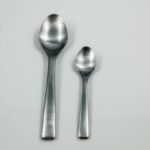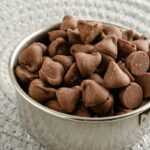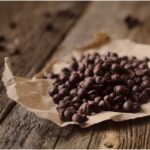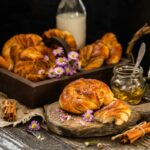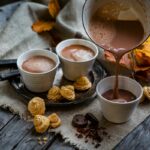Volume conversions are part of the home and professional cook’s every day.
You need to be able to convert seamlessly between them in order to scale a recipe up or down, prepare a recipe in the absence of certain kinds of measuring equipment, and generally keep track of how much of what you’re putting into your meal.
![How Many Teaspoons In One Cup? [Full Conversion Guide]](https://eatkanga.com/wp-content/uploads/2023/04/How-Many-Teaspoons-In-One-Cup-Full-Conversion-Guide.jpg)
One unlikely conversion that seems to spark a surprising level of curiosity across the general population is cup-to-teaspoon. The quick answer?
48 teaspoons, but why would people need such a niche bit of conversion information?
Well, there are many kitchens across the nation that don’t have standard measuring cups, so a suitable stand-in is required, and a teaspoon is as good a utensil as any where accuracy is concerned.
What Constitutes A Teaspoon?
A teaspoon is the smallest of the standard spoon sizes and is called so because of its traditional use as a tea-making tool (Need to know how many teaspoons are in a tablespoon? See our guide here).
Of course, the physical teaspoon itself is not a great way to communicate amounts of ingredients, as they can hold varying amounts.
In light of this, the measurement needed to be standardized, and that’s precisely what we did: 1 teaspoon = 4.93 ml, but bear in mind that not everyone feels the same about this outside of the US.
The UK, Canada, and Australia all use a different standard to us.
Generally speaking, outside the US, a teaspoon is standardized as 5 ml. In fact, legal nutritional labeling within America also subscribes to this standard, which is why most measuring spoon sets also use 5 ml.
So, be wary whenever you find a tasty recipe. Check out the country of origin and ensure you’re using the right units of measurement.
How Is Teaspoon Abbreviated In A Recipe?
There’s nothing worse than a wordy recipe — Give us the details quickly and concisely, so we can get down to the eating ASAP, are we right?
One of the best ways to keep a recipe streamlined is to use abbreviations for lengthy units of measurement such as teaspoon, but if you’ve never encountered these abbreviations before, it can cause some confusion, as those pertaining to spoons are all quite similar.
When it comes to shortening teaspoon, there are a few possibilities. The most common is tsp, but you may also run into recipes that use ts, tspn, or, if the creator has a penchant for minimalism, just t.
Now, before we move on, let’s look over some tablespoon abbreviations, just to be sure you don’t make any mistakes next time you’re whipping up a tasty dish or baking a scrumptious cake.
Tablespoon is most commonly abbreviated as tbsp, but Tb, Tbs, Tbls, and, again, just T, are also used from time to time.
If you’re ever confused as to which spoon is being referred to, look out for either a “b” or a capital “T”, both of which indicate you need a tablespoon rather than a teaspoon.
How Many Teaspoons Per Cup?
As mentioned earlier, one cup = 48 teaspoons if you’re using a proper US unit measuring tool. Using an actual teaspoon will garner different results, as every scoop will be a slightly different size.
But how does the humble teaspoon stack up against the various fractions of a cup? And what about the tablespoon and fluid ounces? Let’s check it out!
- ¾ Cup = 36 Teaspoons — 6 Fluid Ounces
- ½ Cup = 24 Teaspoons — 4 Fluid Ounces
- ⅓ Cup = 16 Teaspoons — 2 ⅓ Fluid Ounces
- ¼ Cup = 12 Teaspoons — 2 Fluid Ounces
- ⅛ Cup = 6 Teaspoons — 1 Fluid Ounce
- 1/16 Cup = 3 Teaspoons — ½ Fluid Ounce — 1 Tablespoon
![How Many Teaspoons In One Cup? [Full Conversion Guide]](https://eatkanga.com/wp-content/uploads/2023/04/How-Many-Teaspoons-In-One-Cup-Full-Conversion-Guide-1.jpg)
What Are You Measuring By When Using Teaspoons Or Cups?
There are three ways of measuring out ingredients:
- Count — As in, three eggs
- Mass — As in, 100 grams of sugar
- Volume — As in, one cup of flour
As you can see, when we measure ingredients out using a cup or anything that utilizes the space occupied by the ingredient, we are measuring volume.
You may remember from your high school math class that volume is determined by multiplying length, width, and height, and that’s exactly what volume is in this context.
Cups and teaspoons utilize all three dimensions to form a single unit of volume.
For recipes that demand ultimate precision, you’re best off weighing your dry powdered or granulated ingredients, but for small applications of things like salt, or recipes that don’t require such exactness, volume measurements are absolutely fine.
Furthermore, if your weighing scales aren’t capable of registering the required amount of an ingredient for a recipe due to its combined weight being too light, volume measuring can save the day.
Scaling that very same recipe up, however, will likely mean the scale will register the ingredient, meaning a mass measurement will be more precise.
Subtypes Of Teaspoon Measurements
Sometimes, recipe creators like to attach some additional details to a simple teaspoon measurement. Generally speaking, these extras fall into three subcategories:
- Level Teaspoon — This means that you’ll get a full scoop with your spoon, then take a knife or something else with a straight edge, and run it across the rim, thus knocking any matter that towered above the perimeter of the spoon.
These are the most precise teaspoon measurements, as they leave no room for variable mass or human error.
- Rounded Teaspoon — A rounded teaspoon is simply a normal scoop that isn’t leveled off, giving you slightly more matter.
Needless to say, these are less precise than level teaspoons, because the exact amount of matter is unregulated, i.e. you’re going by eye.
- Heaped Teaspoon — If you see a heaped teaspoon measurement, it essentially means scoop as much ingredient as you can using your measuring teaspoon… the higher the heap, the better.
Again, this is a highly imprecise measurement, as there’s even more scope for differing mass scoop by scoop.
Will There Be 48 Teaspoons To A Cup Regardless Of Ingredient?
You’re smart to question how the spoon-to-cup conversion goes for varying ingredients before you get started with whatever culinary caper you have planned, but you’ve no need to worry.
No matter what ingredient you’re measuring using teaspoons, it will always be 48 spoons to a cup.
Remember, you’re using the space occupied by an ingredient as the form of measurement, meaning you’ll always need the same amount of spoons to fill the cup.
If we were using mass, on the other hand, as different ingredients weigh different amounts, they wouldn’t all occupy the same amount of space.
For example, 100 grams of flour doesn’t occupy the same amount of space as 100 grams of sugar.
Do Actual Teaspoons Have The Same Scoop Volume As Measuring Teaspoons?
One last piece of spoon wisdom for you before we go our separate ways… actual cutlery teaspoons are not the same as measuring spoons marked as teaspoons, if you catch our drift.
What we mean by this is that when a recipe mentions a teaspoon of whatever ingredient, it’s not referring to the metal teaspoons you use to make your morning cup of Joe.
Rather, it’s referring to the measuring teaspoon you’ll get as part of a dedicated measuring spoon set.
Why? Well, cutlery teaspoons aren’t actually standardized and can run the gamut between 2.5 ml and 7 ml depending on what set you buy and what company produced them. Measuring spoons, by contrast, are all standardized.
Final Thoughts
There you have it — There are 48 teaspoons in every full cup measurement, no matter what ingredient you’re measuring.
Both of these pieces of equipment rely on volume as the primary mode of measurement, comprising length, width, and depth.
- How To Reheat A Cheesesteak - November 5, 2023
- What Are Three Must Have Kitchen Knives? - September 22, 2023
- How To Protect Edges Of Pie Crust - June 15, 2023


